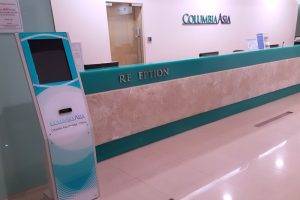On Thursday, Bruce Willis’s family released a statement announcing that he has been diagnosed with frontotemporal dementia. This is a rare form of dementia that presently has no known cure.
Frontotemporal Dementia (FTD) is a neurodegenerative disorder that commonly occurs in individuals under the age of 65. FTD progressively affects the frontal and temporal lobes of the brain, resulting in deficits associated with behavioural changes, language proficiency, and diminished cognitive abilities1.
What is Frontotemporal Dementia?
FTD has a spectrum of clinical syndromes and can have primary clinical manifestations which include2:
- A behavioural variant resulting in prominent changes in a patient’s mannerisms.
- Language variants, which include presentations of progressive aphasia.
- Motor symptoms that mimic atypical parkinsonism.
How is it diagnosed?
Due to the absence of biomarkers, there are no definitive diagnostic tests for FTD. In order to determine an FTD diagnosis, a neurologist will need to perform a comprehensive evaluation of the patient’s history, diagnostic imaging tests (such as magnetic resonance imaging), and neuropsychological assessments. As this is a commonly under-diagnosed condition, detailed accounts by the patient’s family members or caregivers describing any cognitive or behavioural changes over time, are largely utilised to aid diagnosis.
Most instances of FTD occur in individuals between the ages of 45 to 64 and can take up to four years to diagnose4. Some patients experience the symptomatic progression of FTD between 2 and 20 years and more common tasks, especially those that require planning, become increasingly difficult to accomplish4. Patients diagnosed with FTD are also more susceptible to other medical complications such as infections and pneumonia4.
While FTD can be hereditary in nature, affecting individuals with a family history of psychiatric disorders or dementia, some instances can occur sporadically, without any genetic causes4.
What is the treatment for FTD?
Currently, there is no cure for FTD, however, pharmacologic treatments such as antidepressants or antipsychotics that treat behavioural problems may improve a patient’s quality of life4.
Additionally, non-pharmacologic treatments may include4:
- Physical therapy
- Speech therapy
- Cognitive behaviour therapy
- Rehabilitation therapy
Prevalence in Asian Communities
At the present time, there is a lack of comprehensive studies on FTD in Asia. However, a study by the National Neuroscience Institute in Singapore found that of the approximately 27% of patients that were referred to their centre for young-onset dementia, FTD was the third most prevalent6,7.
While there is no cure or definitive measures that prevent FTD, early diagnosis and appropriate management strategies can significantly improve the quality of life for affected individuals and their families. Although lifestyle measures such as regular exercise, a healthy diet, and mental stimulation may help delay the onset of FTD or slow its progression, more research is needed to confirm their effectiveness.
Therefore, it is crucial to continue raising awareness about FTD and supporting ongoing research efforts to find effective treatments and preventive measures for this devastating disease. With increased awareness and research, we can hope to improve the lives of those impacted by FTD and their families.
References:
- Young, J.J. et al. (2017) “Frontotemporal dementia: Latest evidence and clinical implications,” Therapeutic Advances in Psychopharmacology, 8(1), pp. 33–48. Available at: https://doi.org/10.1177/2045125317739818.
- Leroy, M. et al. (2021) “Characteristics and progression of patients with frontotemporal dementia in a Regional Memory Clinic Network,” Alzheimer’s Research & Therapy, 13(1). Available at: https://doi.org/10.1186/s13195-020-00753-9.
- What is FTD? (2023) AFTD. Available at: https://www.theaftd.org/what-is-ftd/disease-overview/ (Accessed: February 18, 2023).
- Khan, I. and De Jesus, O. (2022) “Frontotemporal Lobe Dementia,” StatsPearls (Internet), Treasure Island (FL).
- Frontotemporal dementia (2021) Mayo Clinic. Mayo Foundation for Medical Education and Research. Available at: https://www.mayoclinic.org/diseases-conditions/frontotemporal-dementia/diagnosis-treatment/drc-20354741 (Accessed: February 18, 2023).
- Tan, Y.-L., Ng, A. and Kandiah, N. (2013) “Frontotemporal dementia in Southeast Asia: A comparative study,” Dementia and Geriatric Cognitive Disorders Extra, 3(1), pp. 1–9. Available at: https://doi.org/10.1159/000345780.
- Ng, A.S.L. (2015) Genetics of frontotemporal dementia in Asia: Advancing knowledge through collaboration, Neurology. Wolters Kluwer Health, Inc. on behalf of the American Academy of Neurology. Available at: https://n.neurology.org/content/85/23/2060.short (Accessed: February 18, 2023).













